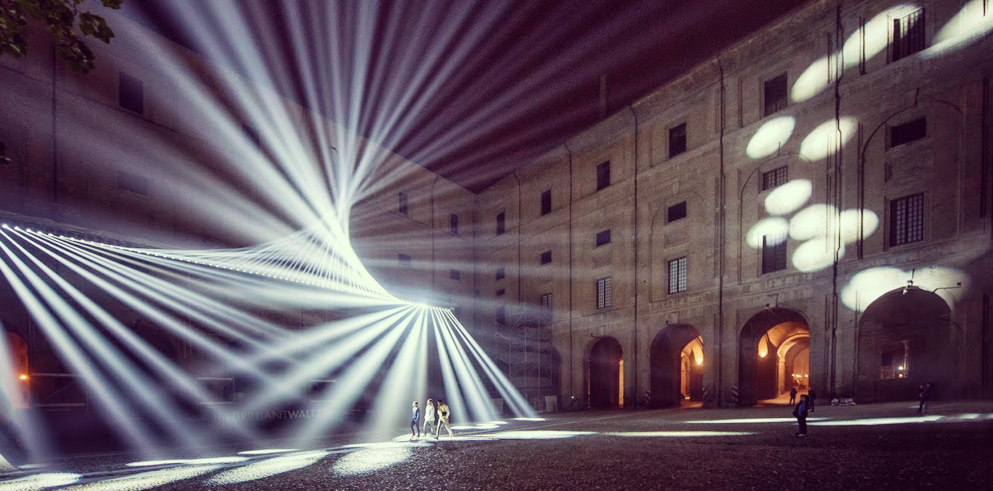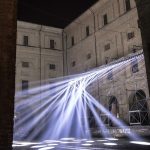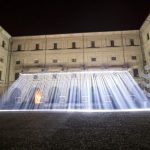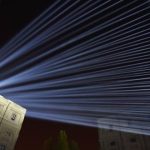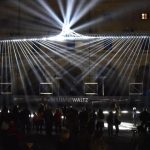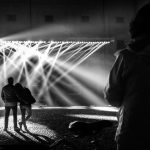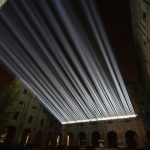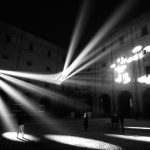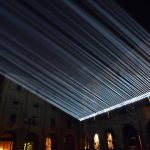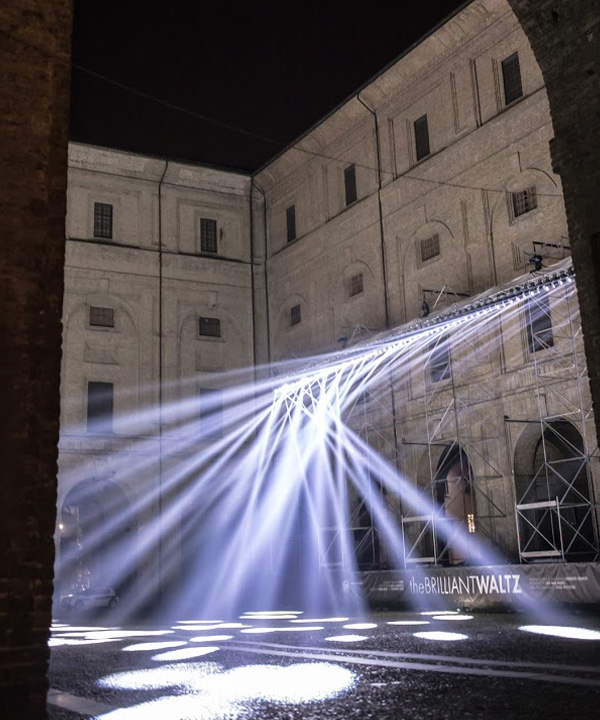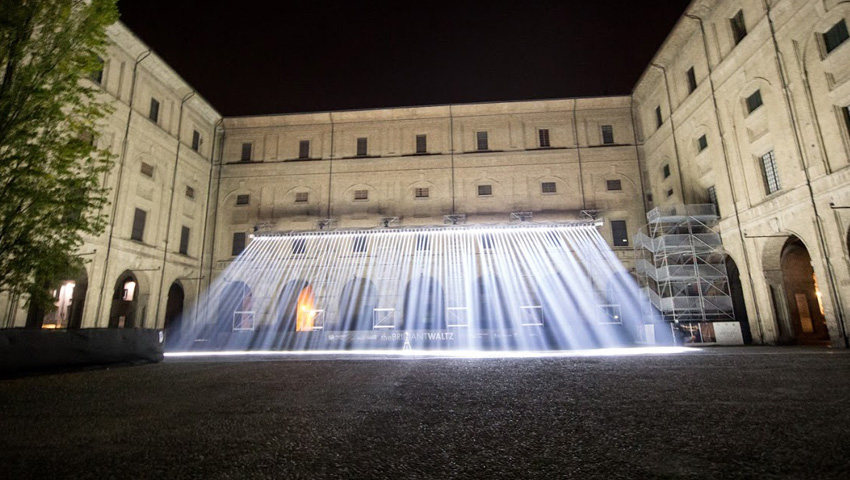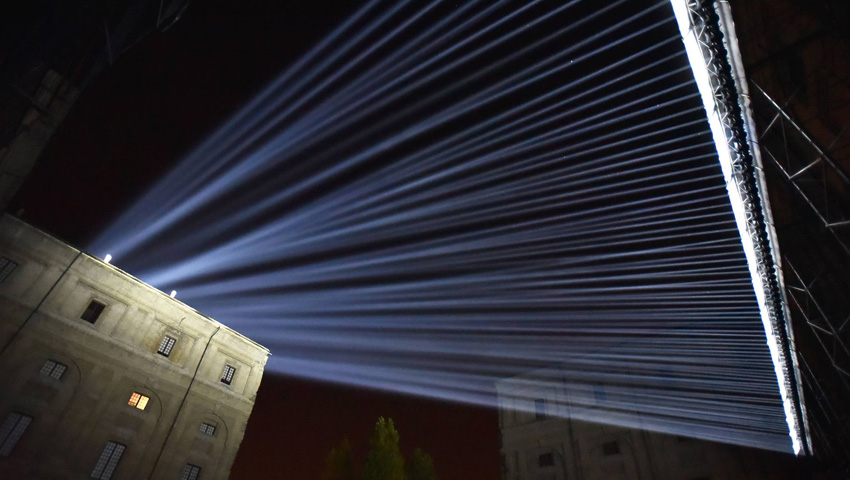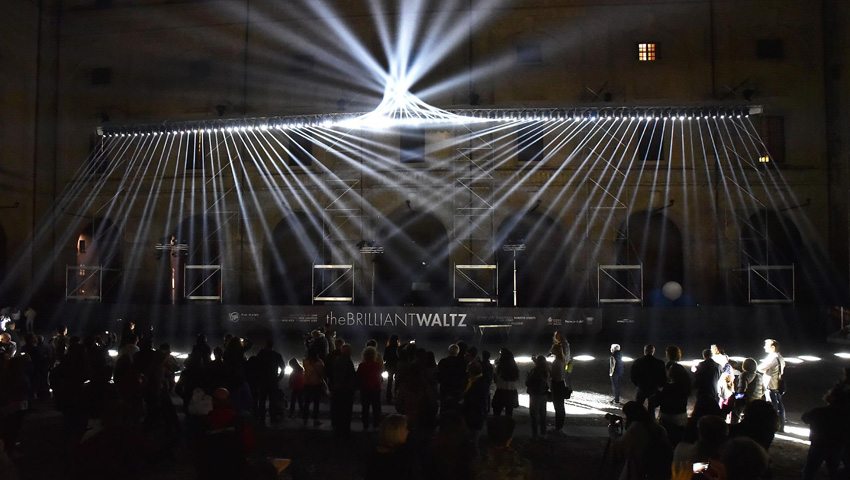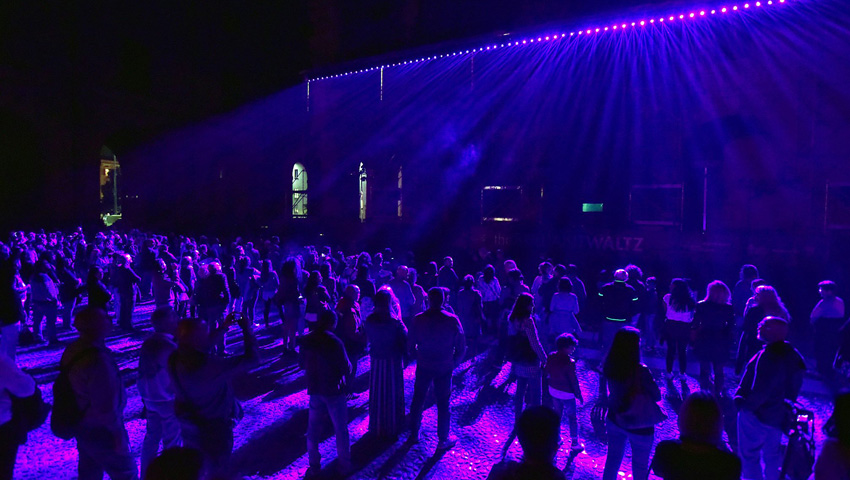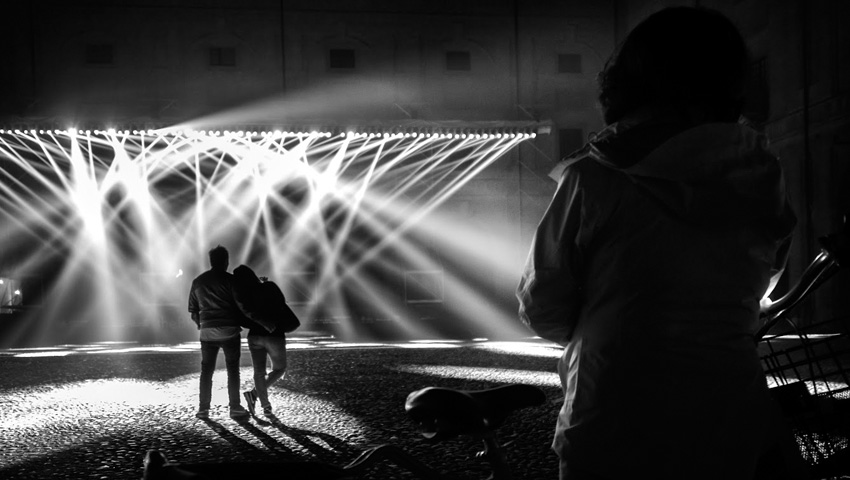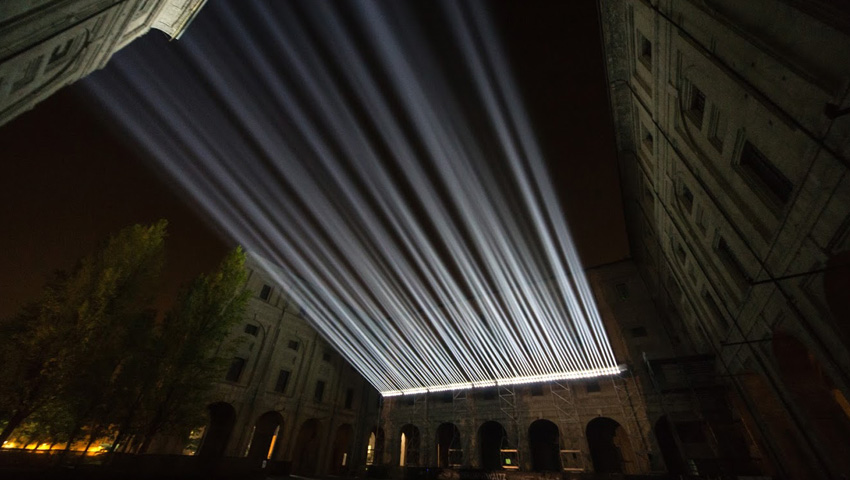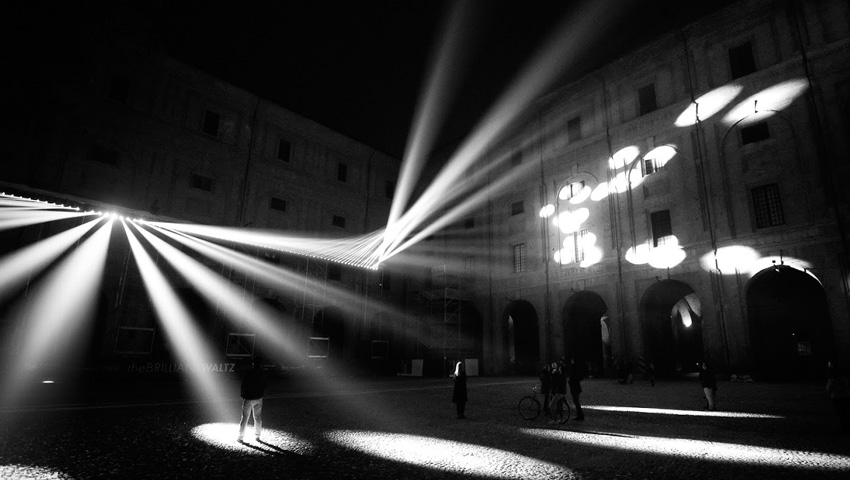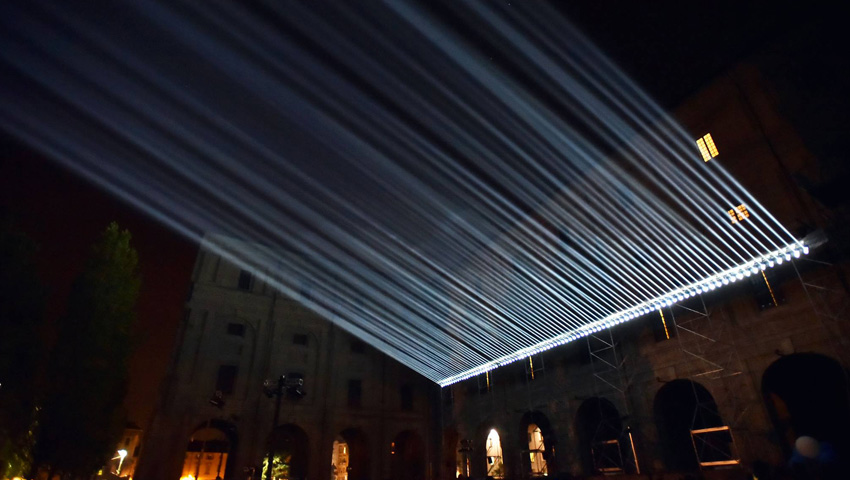Italy – The Teatro Regio di Parma commissioned a work of installation art to celebrate Giuseppe Verdi’s musical genius on the occasion of the recent Festival Verdi. The result was Brilliant Waltz, a lighting installation concept and idea created by an artist known by his own personal code number C999 and lighting designer Luca Carapezzi.
The work was devised to entertain the large local audience and numerous visitors who regularly invade Parma during the period of the international festival. It was designed to meet a precise request from the organizers: to capture public attention and reflect the beauty and grandeur of Verdi through a monumental work of public art.
Brilliant Waltz played with light: Claypaky moving heads beamed out to illuminate the Cortile della Pilotta and cut through the city sky to the notes of Verdi’s famous brilliant waltz. This piece of music has become one of the best known compositions of its kind thanks to Nino Rota, who orchestrated it for the film “The Leopard” by Luchino Visconti. The notes filled the air as the lights recalled the dance steps.
C999 said “I wanted to create a magical moment in a place where people pass through quickly stride by stride, as their lives rush by. I wanted to create an eye-opening light show that could touch everyone’s hearts, and make the hearts of loving couples beat faster and carry them away in a waltz of music and love.”
Six fifty-foot tall towers were erected, recorded music was played throughout the square, and an exceptional number of Claypaky moving heads were arranged in a line on a single fifty-yard-long truss, placed fifty feet above the ground. The whole installation revolved around the choice of using 88 small lightweight Sharpy units.
The Sharpy is a 189 W beam moving head with a light output that – until now – was only possible with lamps that were nine times more powerful. Its beam is so focused and aligned that it looks like the dense monochromatic light of a laser.
The concept behind the work was very simple and elegant: each light was used as if it were the weighted key of a piano. Each one corresponded to a note or a specific movement on the piano keyboard. There were no strings or hammers to make the notes and play the seven octaves covered by the black and white keys; there were only the beams and spectacular aerial effects of the Sharpys.
Each light moved in perfect synchrony with the musical score. The 88 Claypaky Sharpys played the whole tones, sharps and flats in musical and visual sequences and virtuosities.
Through sequences and dynamic variations, which were sometimes slow and elegant and sometimes energetic and spectacular, the Brilliant Waltz installation highlighted Verdi’s musical masterpiece.
Thanks to a full keyboard of moving lights, it was possible to give a masterful interpretation of the maestro’s piece. Each light was turned on as a single note to create absorbing, stimulating atmospheres or simply let the power of the lights flow out to fill the entire Cortile della Pilotta, the square chosen to host the installation. The beams created the dimension and excitement of a magnificent ballroom.
The climax of the thrilling show was when all 88 moving heads pointed into the sky over Parma. It created a powerful, majestic beam of physical light, which was also mainly symbolic, as it crossed the city for several miles. It was seen by everyone in the area, and a great number of pictures and photos taken from all over the city were posted on various social media platforms.
Lighting designer Luca Carapezzi transformed the visual art concept into a lighting design project. He established the specific requirements of the rig and programmed all the movements and effects chosen.
The programming actually touched two distinct areas. With the support of Jerry Roberto Romani, Carapezzi had to synchronize all the movements of the 88 Sharpys with the musical notes, with the precision of a conductor, using MIDI Time Code on a GrandMa Light console. He used a second desk, a Compulite Ultra Violet, to program the other sequences. The Brilliant Waltz installation also had to run at all hours of the day, every day for twenty days. This meant having to copy the entire program onto a new DMXPen touch device, which reproduced the entire light show sequence with a simple click.
The equipment was supplied and installed with great professionalism by Cobra Service, under the technical management of Daniele Ceribella.
Concept and art: C999
Lighting Designer: Luca Carapezzi
Lighting service company: Cobra Service
Lighting Desks: GrandMa Light and Compulite Ultra Violet
